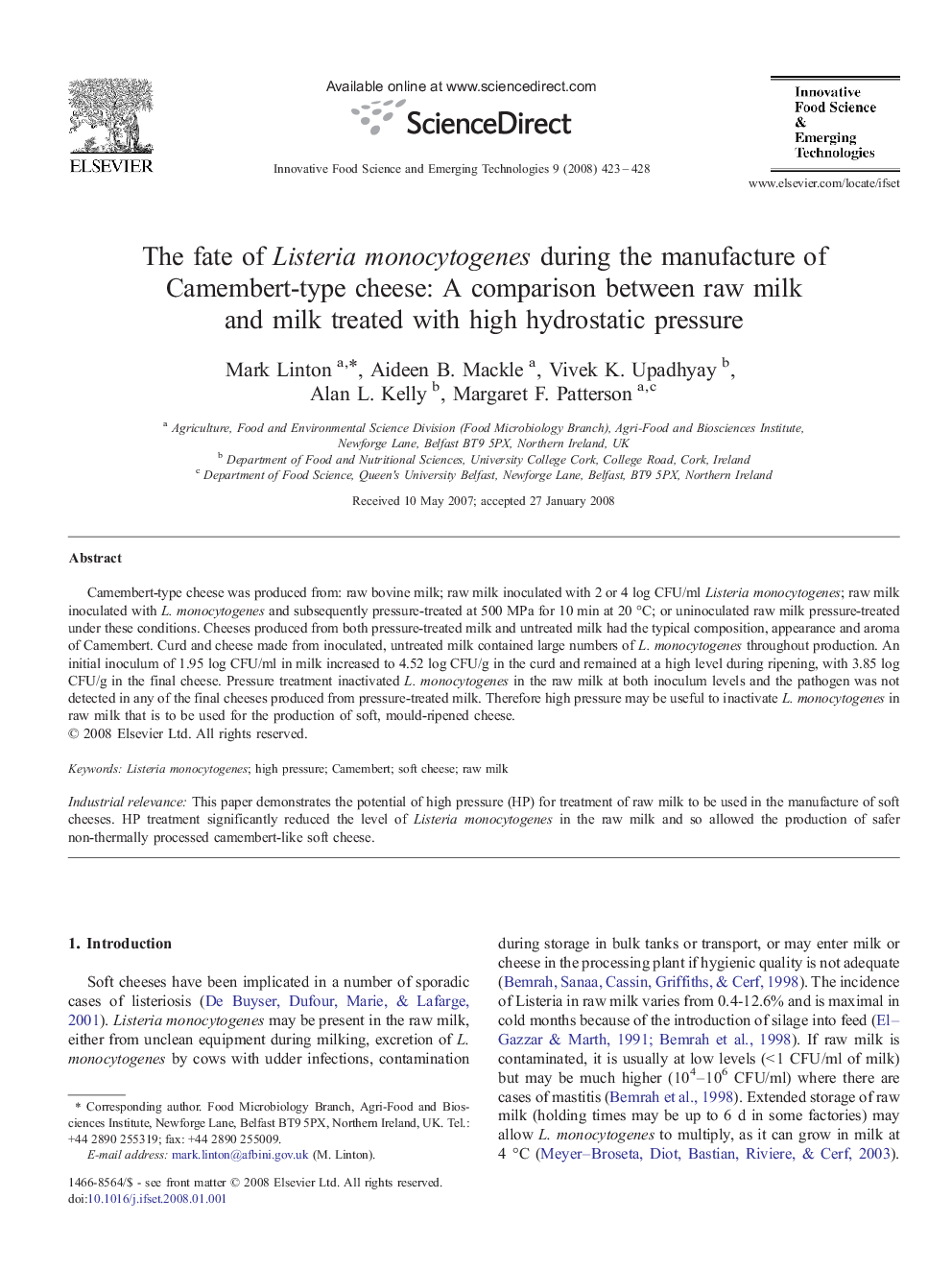| Article ID | Journal | Published Year | Pages | File Type |
|---|---|---|---|---|
| 2087336 | Innovative Food Science & Emerging Technologies | 2008 | 6 Pages |
Camembert-type cheese was produced from: raw bovine milk; raw milk inoculated with 2 or 4 log CFU/ml Listeria monocytogenes; raw milk inoculated with L. monocytogenes and subsequently pressure-treated at 500 MPa for 10 min at 20 °C; or uninoculated raw milk pressure-treated under these conditions. Cheeses produced from both pressure-treated milk and untreated milk had the typical composition, appearance and aroma of Camembert. Curd and cheese made from inoculated, untreated milk contained large numbers of L. monocytogenes throughout production. An initial inoculum of 1.95 log CFU/ml in milk increased to 4.52 log CFU/g in the curd and remained at a high level during ripening, with 3.85 log CFU/g in the final cheese. Pressure treatment inactivated L. monocytogenes in the raw milk at both inoculum levels and the pathogen was not detected in any of the final cheeses produced from pressure-treated milk. Therefore high pressure may be useful to inactivate L. monocytogenes in raw milk that is to be used for the production of soft, mould-ripened cheese.Industrial relevanceThis paper demonstrates the potential of high pressure (HP) for treatment of raw milk to be used in the manufacture of soft cheeses. HP treatment significantly reduced the level of Listeria monocytogenes in the raw milk and so allowed the production of safer non‐thermally processed camembert‐like soft cheese.
